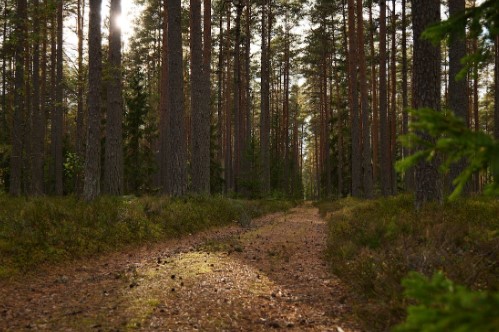The Harmless Mimics
The benefit of looking utterly repellent Camouflage allows an animal to blend in with or resemble the prevailing background. But this is not enough for some creatures who wish to disguise the fact that they are edible.
So they adopt the look of something clearly inedible, such as stones, twigs thorns, and even fresh bird droppings. It is little more unappealing than a fresh bird dropping and any creature that mimics one will avoid being eaten by all but the most desperate of predators.
The Chinese character moth, for example, which lives in hawthorn hedges, looks very like a shiny, rather watery, bird-dropping. Making no attempt to conceal itself, the moth sits among the foliage with wings closed, ignored by even the hungriest predator.
The nymph of a species of bush cricket, or katydid, a native of Trinidad, takes the impersonation of bird droppings even further. It plays its hind legs to that, from above, it looks as if it has dropped from a height and splashed all over the leaf. It polishes the disguise with a realistic uric acid glint and dribbles effect that gives the bush cricket a high degree of security.

Animals that act their way out of danger?
As well as adopting a disguise as a means of eluding predators, some creatures have enhanced there deception by the way in which they behave. Among such actors is a stick insect that lives in New Guinea.
Its flattened, frayed body looks like a leaf in the last stages of insect-chewed dilapidation. It adds to this impression by suspending itself from a bush by one of its legs and spinning in the breeze like a leaf that is about to fall off.
Another actor is a Kenyan beetle. Active at night, it spends, its days among drifts of last year’s seeds and is no more likely to move unaided than they are. If it does stir at all, it is only by being moved by the same breeze that is blowing the seeds about.
Some insects have assumed double disguises. There’re some species of praying mantis that live in thorn bushes and look like twigs, while their offspring resemble thorns. Similarly, the tortoise beetle of Trinidad has the appearance of a seed while sitting on the ground but on a twig, it presents another aspect of itself and looks like a thorn.
Animals that blend with their backgrounds are to some extent imprisoned by them since they’d be dangerously conspicuous elsewhere. A creature resembling a blade of grass, for example, would be easy prey if it spent much of its time sitting on a slab of concrete. Another example is the leafy sea dragon, a form of the seahorse.
This astonishing fish lives among kelp beds off the coast of eastern Australia and its trailing weed-like appendages so resemble the surrounding plant’s fronds as to be practically indistinguishable from them. Outside the kelp, however, its disguise would be both conspicuous and a hazard.
Many amphibians also have to live amid the background they mimic. The casque-headed frog of Ecuador is exclusively a ground dweller that blends so closely with the forest floor vegetation that it is virtually invisible. Horned toads are equally convincing as leaf litter until the males piercing calls uttered in the breeding season betray there presence.
Read More – How to Keep and Rear Butterflies?






